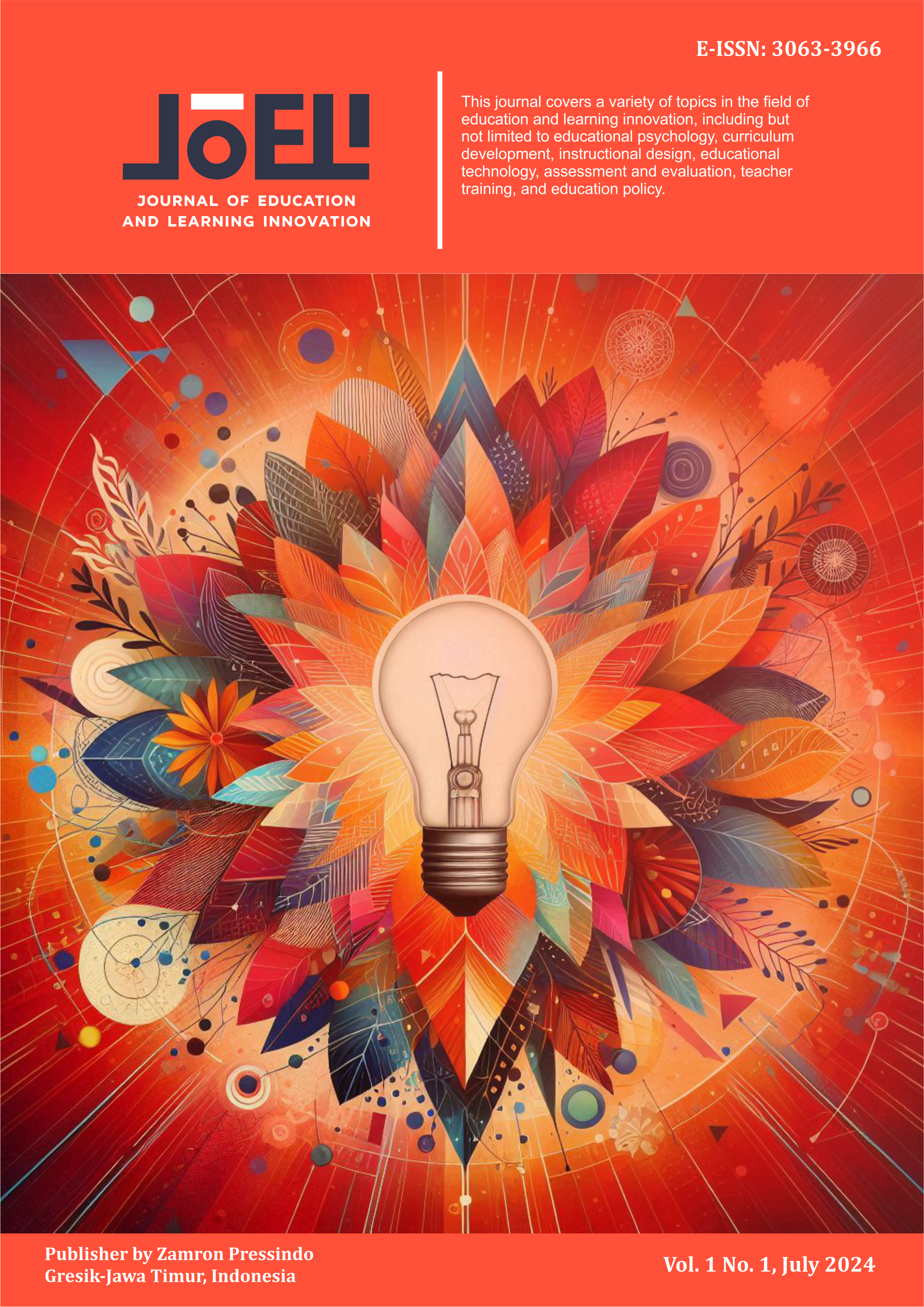Student and Lecturers Perspectives and Challenges on the Implementation of Online Learning in Higher Education Setting: A Survey Study
DOI:
https://doi.org/10.72204/q8v5rb52Keywords:
Perspective, Challenges, Online Learning, Higher EducationAbstract
Nowadays, information and communication technology (ICT) has grown in revolutionizing education. Many innovations in ICT for solutions that can improve teaching and learning inputs, processes, and outcomes. One of ICT in the teaching and learning process is called online learning. Online learning has become a solution to learning mode during the pandemic years This research is focused on higher education, especially in English language teaching exploring students’ and lecturers’ perspectives on the implementation of online learning modes. The subjects of this research were 49 students and 10 lecturers in the English Department of a private university in Surabaya. This research aims to investigate the perspectives of students and lecturers on the implementation of online learning and to find out the problems faced by students and lecturers during online teaching during the pandemic. This study used a survey design with a questionnaire and interview for the instrument. The findings show that students and lecturers hold negative perspectives on the implementation of online learning during the pandemic. Despite that the students and lecturers have pros and cons on online learning.
Downloads
References
Akkonyulu, B., & Soylu, Y. M. (2008). Development of a scale on learners' views on blended learning and its implementation process. Internet and Higher Education Journal, 11(26), 1-7.
Aljaraideh, Y., & Al Bataineh, K. (2019). Jordanian Students’ Barriers of Utilizing Online Learning: A Survey Study. International Education Studies, 12(5), 1-10.
Ally, M. (2004). Foundations of Educational Theory for Online Learning. In Theory and Practice of Online Learning (pp. 3-31). Athabasca: Athabasca University.
Anderson, T., & Elloumi, F. (2004). Theory and Practice of Online Learning. Canada: Athabasca University.
Aydin, I. (2013). The Effect Of Microteaching Technique On Turkish Teacher Candidates' Perceptions Of Efficacy In Lesson Planning, Implementation, And Evaluation.
Electrical Journal of Social Sciences, 12(43), 67-81.
Balci, E. (2017). Perceptions of Blended Learning in an EFL Setting. Cambridge University Press.
Bates, A. W. (2019). Teaching in a digital age: Guidelines for designing teaching and learning (2nd ed.). Tony Bates Associates.
Cook-Sather, A. (2003). Listening To Students About Learning. In Teaching Exceptional Children (pp. 22-26).
Creswell, J. W. (2012). Educational Research: Planning, Conducting, and Evaluating Quantitative and Qualitative Research (4th ed.). USA: Pearson.
Dudeney, G., & N, H. (2016). Blended Learning In A Mobile Context: New Tools, New Learning Experiences. In The Cambridge Guide To Blended Learning For Language Teaching (pp. 219-233). Cambridge University Press.
Elliot, D. (2009). Internet Technologies and Language Teacher Education.
Entwistle, N., & Tait, H. (1990). Approaches To Learning, Evaluations Of Teaching, And Preferences For Contrasting Academic Environments. Higher Education, 19.
Gabbilon, Z. (2014). A Synopsis Of L2 Teacher Belief Research. Belgrade International Conference On Education, 14-16.
Graham, C. R., & Bonk, C. J. (2006). Blended Learning Systems: Definition, Current Trends, and Future Directions. In The Handbook of Blended Learning: Global Perspectives. San Francisco: CA: Pfeiffer Publishing.
Hafifah, G. N. (2020). Teachers Perspectives of ICT Integration in English Language Teaching: A Review of Literature. Journal of English Educators Society, 5(1), 1-7.
Hunt, B. D., & Oyarzun, B. (2019). Online Learning Perspectives of Native American Students. Journal of Educational Technology Systems, 1-14.
Khan, B. (1997). Web-based instruction: What is it and why is it? Educational Technology Publications, 5-18.
Konings, K. (2007). Student and Teacher Perspectives On Education.
Riley, R. (2000). Teach to the Future Brings Together Microsoft and Other Industry Leaders in Half-Billion Dollar Commitment to Improve Student Learning. Journal of Technology Teaching, 1-14.
Roelofs, C., & Terwel, J. (1999). Constructivism and Authentic Pedagogy: State Of the Art and Recent Developments In The Dutch National Curriculum In Secondary Education. Journal Of Curriculum Studies, 201-207.
Rosset, A. (2002). Waking in the Night and Thinking about E-Learning. In A. Rosset, The ASTD e-learning handbook (pp. 3-18). New York, McGraw-Hill.
Stickler, U., Beaven, T., Emke, M. E., Germain-Rutherford, A., Hampel, R., Hopkins, J., & Stanojevic, M. (2010). Stepping Stones To Teaching Languages With Technologies. Developing Online Teaching Skills Special Issue, 10(2).
Sun, S. Y. (2014). Learner Perspectives on Fully Online Language Learning. Distance Education, 35(1).
Wei, C. W., & Chou, C. (2020). Online Learning Performance and Satisfaction: Do Perceptions and Readiness Matter? Distance Education.
Zounek, J. (2013). Pros and Cons of Online Learning. International Conference New Technologies and Media Literacy Education. Prague.
Downloads
Published
Issue
Section
License
Copyright (c) 2024 Andina Nur Oktavia, Gusti Nur Hafifah, Sulton Dedi Wijaya

This work is licensed under a Creative Commons Attribution-ShareAlike 4.0 International License.

JOELI: Journal of Educational and Learning Innovation Published by CV Zamron Pressindo, Gresik, East Java, Indonesia is licensed under a Creative Commons Attribution-ShareAlike 4.0 International License.











 © 2024 This work is licensed under a
© 2024 This work is licensed under a 